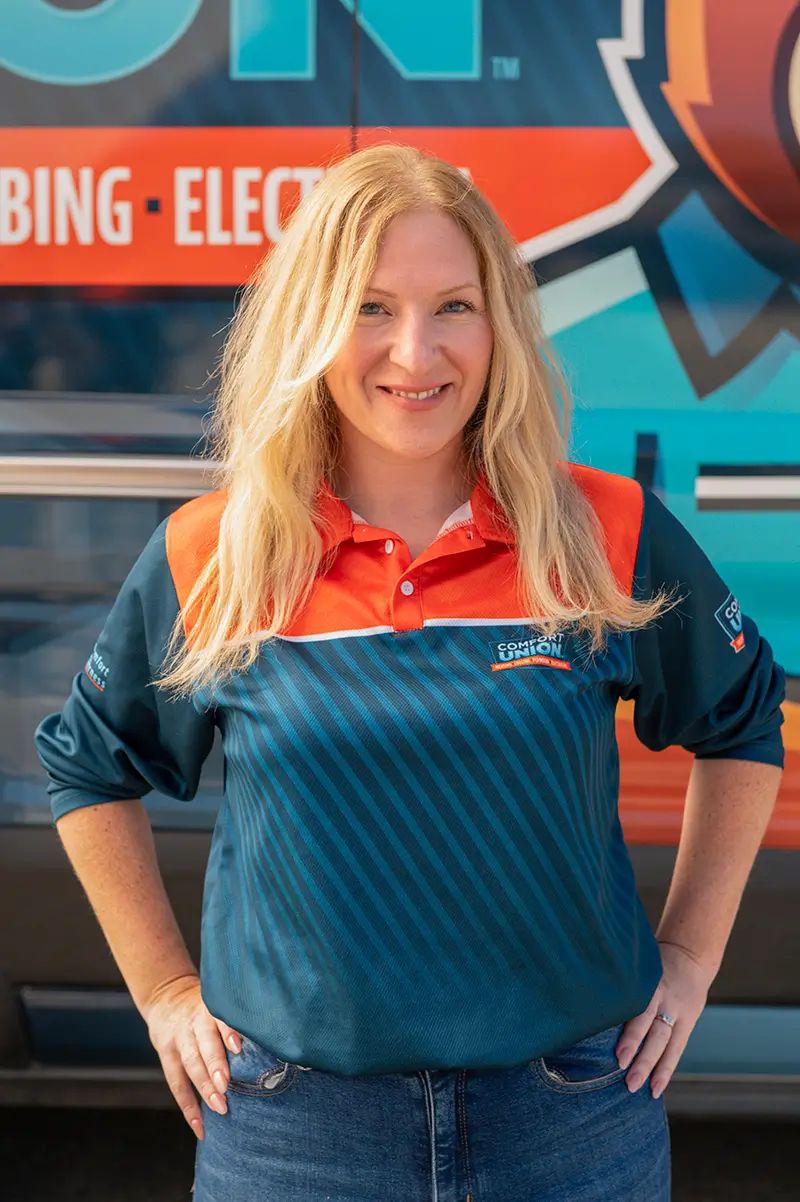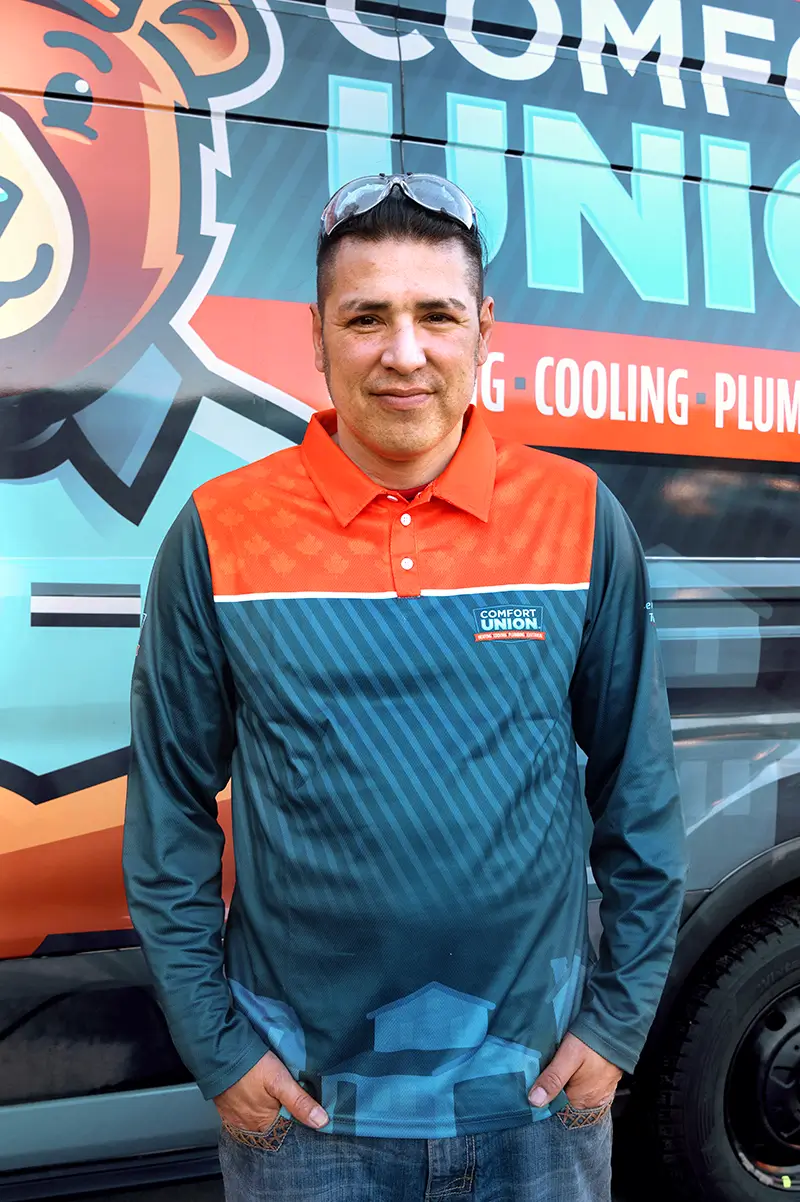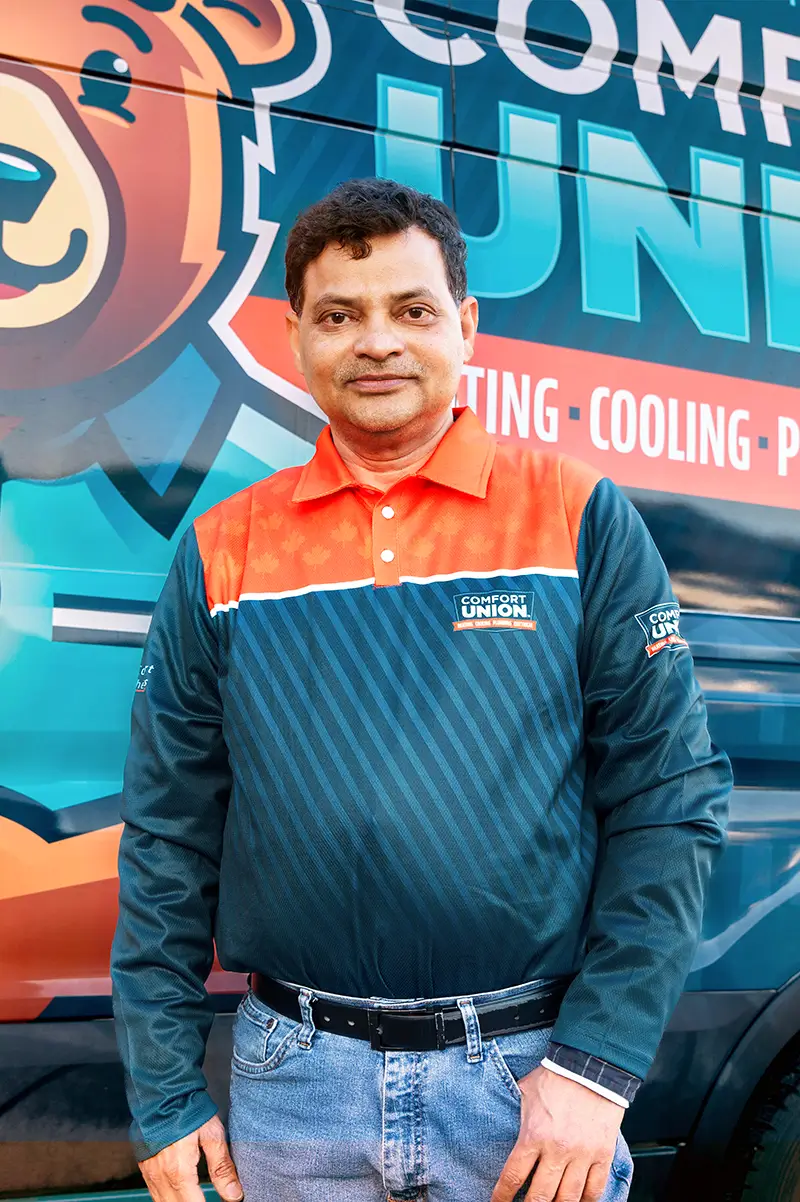Calgary winters are notoriously long and cold, which means your heating system runs for months at a time. A furnace heat exchanger ensures that each unit of natural gas is converted into usable heat for your home, keeping your energy bills reasonable and your family comfortable. Without a properly functioning heat exchanger, even a new furnace can struggle to perform efficiently. Understanding its role helps homeowners make informed decisions about furnace maintenance, upgrades, or replacement.
In this guide, we will walk through what a heat exchanger does, how it works, and why it matters for Calgary homeowners.
Need a New Furnace?
With Flexible Financing Options
What Is a Heat Exchanger in a Furnace?

A heat exchanger is a metal chamber inside your furnace that transfers heat from combustion gases to the air that circulates through your home. It keeps dangerous gases like carbon monoxide separate from your indoor air, making it both a safety and efficiency feature. Unlike a heat pump, which moves heat instead of creating it, a natural gas furnace relies entirely on this component to deliver warmth.
For more technical details, Lennox explains the heat exchanger as the part that safely transfers heat from combustion gases to your home’s air.
How a Furnace Heat Exchanger Works Step by Step
A natural gas furnace uses the heat exchanger in several key steps:
Step 1: Burners ignite the gas
The furnace starts by safely igniting natural gas in the combustion chamber.
Step 2: Hot gases pass through the exchanger
These combustion gases flow through the metal chambers of the heat exchanger, heating it up.
Step 3: Air absorbs the heat
Your furnace blower pushes cool indoor air across the hot walls of the exchanger, warming the air for distribution.
Step 4: Exhaust vents safely outside
Cooler combustion gases are expelled outside through a vent or flue, keeping your home safe.
High-efficiency furnaces may use secondary heat exchangers to extract additional warmth from combustion gases before they exit the system. This increases your furnace’s AFUE and lowers fuel costs.
Safety First: What Happens If the Heat Exchanger Cracks
A cracked heat exchanger is a serious safety concern. It can allow carbon monoxide, a colorless and odorless gas, to leak into your home. Warning signs include unusual odors, a yellow flame instead of blue, soot around the burners, or odd noises during operation. Annual professional inspections are crucial to catch these issues early.
If you notice any of these warning signs, it is important to contact a qualified technician for furnace repair in Calgary.
How the Heat Exchanger Impacts Efficiency

The design and condition of your heat exchanger directly affect your furnace’s efficiency. A clean, well-functioning exchanger maximizes the transfer of heat to your home, reducing fuel waste. A damaged, dirty, or rusted exchanger can lower efficiency, increase energy bills, and shorten your furnace’s lifespan. For Calgary homeowners who rely on heating for months at a time, maintaining a high-efficiency furnace is both cost-effective and environmentally responsible.
Learn more about the benefits of upgrading to a high-efficiency furnace in Calgary.
Heat Pump vs Natural Gas Furnace: Where the Heat Exchanger Fits In
Heat pumps move heat instead of generating it through combustion, so they do not use a traditional heat exchanger. In Calgary’s harsh winters, a natural gas furnace with a properly functioning heat exchanger offers consistent warmth and reliability. Some homeowners opt for dual-fuel systems, where a heat pump handles mild days and a gas furnace takes over during extreme cold. Understanding the heat exchanger’s role helps you make an informed decision about your heating system.
When to Repair or Replace Your Furnace
Signs that your heat exchanger or furnace may need repair include rising energy bills, uneven heating, visible rust, or cracks in the exchanger. If your furnace is older than 15–20 years, it may be time to consider a replacement to take advantage of modern high-efficiency models. For Calgary homeowners, replacing an aging furnace can improve comfort and reduce monthly heating costs. Learn about New Furnace Costs in Calgary.
FAQs About Furnace Heat Exchangers in Calgary
How long does a furnace heat exchanger last?
Most last 15–20 years, but proper maintenance can extend their lifespan.
What are the warning signs of a cracked heat exchanger?
Watch for odd odors, yellow flames, soot buildup, and unusual furnace noises.
Can a cracked exchanger be repaired?
Some minor damage can be repaired, but major cracks often require replacement to ensure safety.
How does a high-efficiency exchanger improve comfort and bills?
It maximizes heat transfer, reduces fuel waste, and provides consistent warmth for Calgary’s long winters.
Does a heat pump have a heat exchanger, too?
Heat pumps do not use a traditional combustion heat exchanger; they transfer heat from outdoor air instead.

Fast, reliable furnace repair in Calgary. We diagnose and fix all makes and models to restore your home’s warmth quickly and safely.

Keep your system running smoothly with a professional furnace tune-up in Calgary. We clean, inspect, and optimize for peak efficiency and safety.

Breathe easier with professional furnace duct cleaning in Calgary. Remove dust, debris, and allergens for cleaner air and better system performance.














